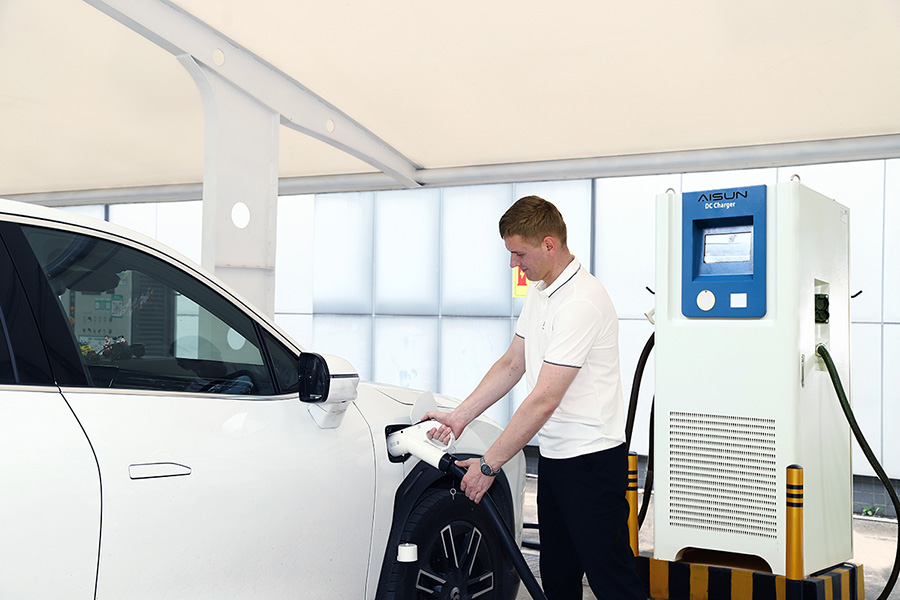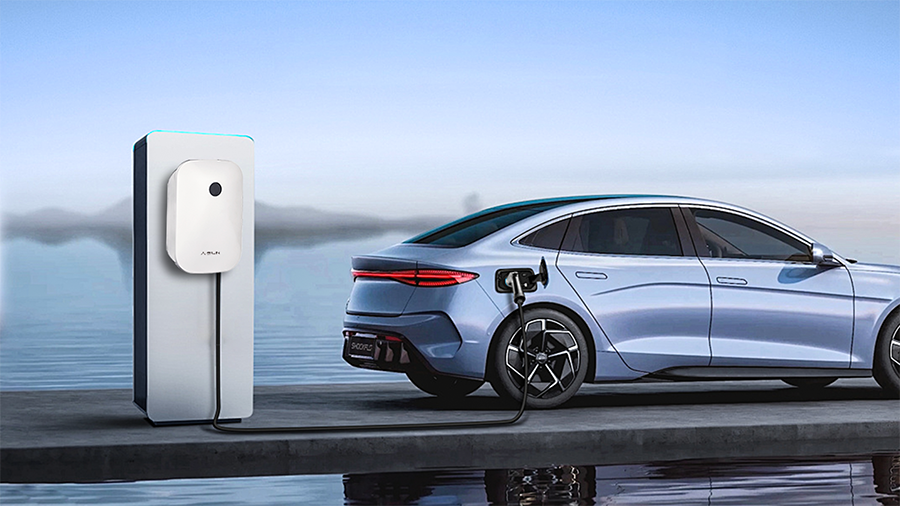As electric vehicle (EV) ownership continues to rise, many homeowners are considering the convenience of installing an EV charger in their garage. With the increasing availability of electric cars, installing an EV charger at home has become a popular topic. Here’s a comprehensive, step-by-step guide on how to install an EV charger in your garage.

AISUN DC EV Charger
Step 1: Assess Your Electrical System
Before installing an EV charger, it's crucial to assess your home's electrical system to ensure it can support the additional load. Contact a qualified electrician to perform a load calculation and determine if your electrical panel has the capacity to handle the charger. If necessary, an upgrade to your electrical panel may be required to accommodate the EV charger.
Step 2: Choose the Right EV Charger
There are various types of EV chargers available, including Level 1, Level 2, and DC fast chargers. For home use, Level 2 chargers are the most common choice due to their faster charging capabilities compared to Level 1 chargers. Select a charger that is compatible with your vehicle and meets your specific charging needs.
Step 3: Obtain Permits and Approvals
Before proceeding with the installation, check with your local building department to obtain the necessary permits and approvals for installing an EV charger in your garage. Compliance with local building codes and regulations is essential to ensure the safety and legality of the installation.
Step 4: Install the Charger
Once you have obtained the required permits, hire a licensed electrician to install the EV charger in your garage. The electrician will run wiring from the electrical panel to the charger location, install the charger, and ensure it is properly grounded and connected to the electrical system.
Step 5: Test the Charger
After the installation is complete, the electrician will test the EV charger to ensure it is functioning correctly and safely. They will also provide instructions on how to use the charger and any maintenance requirements.
Step 6: Enjoy Convenient Charging at Home
With the EV charger successfully installed in your garage, you can now enjoy the convenience of charging your electric vehicle at home. No more trips to public charging stations; simply plug in your car and let it charge overnight.

AISUN AC EV Charger
Conclusion
Installing an EV charger in your garage requires careful planning, assessment of your electrical system, obtaining permits, and hiring a qualified electrician for the installation. With the growing popularity of electric vehicles, having a home charging solution is becoming a necessity for many homeowners. By following these steps, you can ensure a safe and efficient installation of an EV charger in your garage.
Post time: Jul-08-2024





